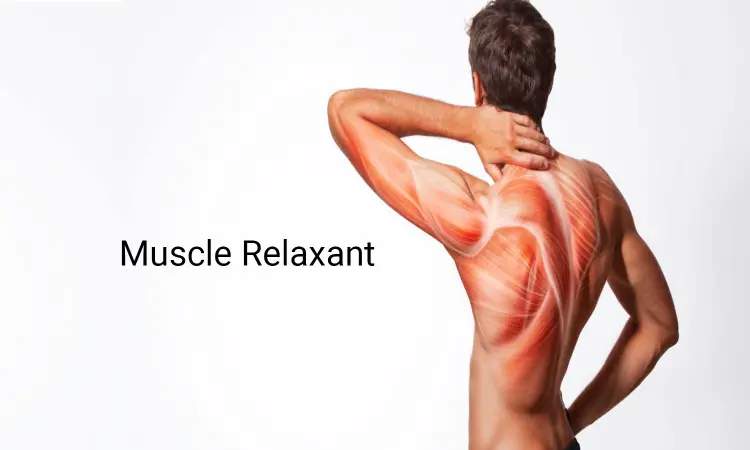- Home
- Medical news & Guidelines
- Anesthesiology
- Cardiology and CTVS
- Critical Care
- Dentistry
- Dermatology
- Diabetes and Endocrinology
- ENT
- Gastroenterology
- Medicine
- Nephrology
- Neurology
- Obstretics-Gynaecology
- Oncology
- Ophthalmology
- Orthopaedics
- Pediatrics-Neonatology
- Psychiatry
- Pulmonology
- Radiology
- Surgery
- Urology
- Laboratory Medicine
- Diet
- Nursing
- Paramedical
- Physiotherapy
- Health news
- Fact Check
- Bone Health Fact Check
- Brain Health Fact Check
- Cancer Related Fact Check
- Child Care Fact Check
- Dental and oral health fact check
- Diabetes and metabolic health fact check
- Diet and Nutrition Fact Check
- Eye and ENT Care Fact Check
- Fitness fact check
- Gut health fact check
- Heart health fact check
- Kidney health fact check
- Medical education fact check
- Men's health fact check
- Respiratory fact check
- Skin and hair care fact check
- Vaccine and Immunization fact check
- Women's health fact check
- AYUSH
- State News
- Andaman and Nicobar Islands
- Andhra Pradesh
- Arunachal Pradesh
- Assam
- Bihar
- Chandigarh
- Chattisgarh
- Dadra and Nagar Haveli
- Daman and Diu
- Delhi
- Goa
- Gujarat
- Haryana
- Himachal Pradesh
- Jammu & Kashmir
- Jharkhand
- Karnataka
- Kerala
- Ladakh
- Lakshadweep
- Madhya Pradesh
- Maharashtra
- Manipur
- Meghalaya
- Mizoram
- Nagaland
- Odisha
- Puducherry
- Punjab
- Rajasthan
- Sikkim
- Tamil Nadu
- Telangana
- Tripura
- Uttar Pradesh
- Uttrakhand
- West Bengal
- Medical Education
- Industry
New promising treatment for common form of muscular dystrophy

Researchers have designed a potential new treatment for one of the most common forms of muscular dystrophy, according to a new study published today in the Proceedings of the National Academy of Sciences.
Toshifumi Yokota, professor of medical genetics at the University of Alberta, led a team from Canada and the U.S. to create and test synthetic DNA-like molecules that interfere with the production of a toxic protein that destroys the muscles of people who have facioscapulohumeral muscular dystrophy (FSHD).
FSHD occurs in one in 8,000 people and causes progressive weakness in the muscles of the face, shoulders and limbs. Onset is usually in the teens or early adulthood. Some patients have trouble breathing; many use a wheelchair. All face lifelong disability.
"There is no cure for FSHD at the moment," said Yokota, who has devoted his career to searching for treatments for all forms of muscular dystrophy.
"This paper shows the potential for this new type of therapy and makes progress towards finding a treatment candidate."
There are dozens of types of muscular dystrophy, almost all involving different genetic mutations that lead to weak muscles. FSHD, the third most common form of muscular dystrophy, causes patients to produce the protein DUX4, which damages muscle cells and causes the cells to die.
"Our goal is to knock down the production of DUX4 so their muscle cells can survive," said Yokota.
His team designed the treatment molecules, technically known as locked nucleic acid (LNA) gapmer antisense oligonucleotides (AOs), or "gapmers" for short. They specifically target the location in the gene that causes DUX4 production.
The researchers tested the treatment in patient-derived cells in the laboratory and in mice.
"We used a very low concentration of the treatment and it knocked down more than 99 per cent of the DUX4 production, so this is extremely efficient," Yokota said.
The researchers found the muscle cells were larger and more functional after treatment.
Yokota noted that gapmer therapy has been developed for diseases such as inherited high cholesterol, Huntington's disease and even some cancers. None has yet been approved for muscle diseases such as muscular dystrophy.
Next steps for the research team include testing better delivery methods, studying safety and side-effects, and determining how long the drug's benefits last. The researchers have applied for a patent and are seeking a pharmaceutical company partner to conduct a human trial.
"We are not ready to start clinical trials but it's a significant first step towards future drug development," Yokota said.
For more details click on the link: https://doi.org/10.1073/pnas.1909649117
Hina Zahid Joined Medical Dialogue in 2017 with a passion to work as a Reporter. She coordinates with various national and international journals and association and covers all the stories related to Medical guidelines, Medical Journals, rare medical surgeries as well as all the updates in the medical field. Email: editorial@medicaldialogues.in. Contact no. 011-43720751
Dr Kamal Kant Kohli-MBBS, DTCD- a chest specialist with more than 30 years of practice and a flair for writing clinical articles, Dr Kamal Kant Kohli joined Medical Dialogues as a Chief Editor of Medical News. Besides writing articles, as an editor, he proofreads and verifies all the medical content published on Medical Dialogues including those coming from journals, studies,medical conferences,guidelines etc. Email: drkohli@medicaldialogues.in. Contact no. 011-43720751


